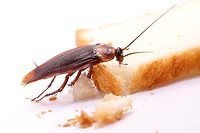What the Food Industry Needs to Know About the New Prop 65 Warning Requirements

A majority of California voters in 1986 approved a ballot initiative known as Proposition 65, officially titled California’s Safe Drinking Water and Toxic Enforcement Act of 1986 (Prop 65). Prop 65 seeks to protect California’s drinking water sources from being contaminated with chemicals known to the state of California to cause cancer, birth defects, or other reproductive harm, and seeks to require businesses to warn when they knowingly and intentionally cause significant exposures to listed chemicals known to cause such harm. In general terms, Prop 65 requires businesses, manufacturers, retailers, and certain others (such as employers) to inform Californians about exposures to such chemicals. This is done through warning signs and warning labels.
Effective August 30, 2018, businesses in California or those businesses whose products reach California consumers must comply with significant changes to the Prop 65 scheme. Although there are changes that affect all industries, the purpose of this article is to provide an overview of the changes to the warning requirements that specifically affect food products.
Is My Business Subject to Prop 65?
Generally speaking, a nongovernmental business with 10 or more employees must provide a warning for products containing one or more of the chemicals listed by California Office of Environmental Health Hazard Assessment (OEHHA) unless: (1) the business can demonstrate that exposure to the chemical poses “no significant risk level” of cancer, or “no observable effect level” of birth defects or reproductive harm; (2) the exposure is one for which federal law governs warning in a manner that preempts state authority; or (3) the exposure takes place less than 12 months subsequent to the listing of the chemical in question on the list required to be published by OEHHA.
OEHHA’s list of chemicals identify whether the chemical is listed as a potential carcinogen [identified on the list as “cancer”] or whether the chemical is listed as reproductive toxicity [identified on the list as “developmental toxicity,” “female reproductive toxicity,” and/or “male reproductive toxicity”]. The list of chemicals can be found on OEHHA’s website.
If no exception applies and the chemical exposure is above the “no significant risk level” or “no observable effect level,” Prop 65 requires that the business provide a clear and reasonable warning. Although no specific language is required, Prop 65 provides for a “safe harbor warning” where if the warning meets the safe harbor requirements, the warning is deemed to be clear and reasonable and thus the warning is said to comply with the Prop 65 requirements. The new regulations have made significant changes to what is required under the safe harbor warning.
What Must the New Safe Harbor Warning Contain?
There are five main things to remember about the content of the new Prop 65 safe harbor warning.
1. The Prop 65 warning must contain the word “WARNING” in all capital letters and in bold print.[1]
2. The business must decide whether the product contains any chemicals listed as a carcinogen, reproductive toxicant, or both.
Carcinogen Only: If the product only contains chemical[s] listed as a carcinogen, then the warning should include the language: “Consuming this product can expose you to chemicals including [name of one or more chemicals], which is [are] known to the State of California to cause cancer.”
Reproductive Toxicity Only: If the product only contains a chemical listed as a reproductive toxicant, then the warning should include the following language: “Consuming this product can expose you to chemicals including [name of one or more chemicals], which is [are] known to the State of California to cause birth defects or other reproductive harm.”
Both Carcinogen Chemical and a Reproductive Toxicity Chemical: If the product contains both a chemical that is listed as a carcinogen and another chemical that is listed as a reproductive toxicant, then the warning should include the following language: “Consuming this product can expose you to chemicals including [name of one or more chemicals], which is [are] known to the State of California to cause cancer and [name of one or more chemicals], which is [are] known to the State of California to cause birth defects or other reproductive harm.”
One Chemical Listed as Both Carcinogen and Reproductive Toxicity: If the product contains a chemical that is listed as both a carcinogen and a reproductive toxicant, then the warning should include the following language: “Consuming this product can expose you to chemicals including [name of one or more chemicals], which is [are] known to the State of California to cause cancer and birth defects or other reproductive harm.”[2]
If there are more than one listed carcinogen chemicals or more than one listed reproductive toxicants, then it is up to the business to decide what chemical to specifically name on the warning.[3] Note that if a product contains a chemical that is listed as both a carcinogen and a reproductive toxicant, the warning would only need to name that one chemical and the proper language noting that it causes both cancer and reproductive harm, as illustrated above.
If there is only one chemical, then the phrase “chemicals including” can be deleted.[4]
3. The warning must reference the Prop 65 warning food website as follows: “For more information go to www.P65Warnings.ca.gov/food.”
4. If the warning is on the food product label itself, it must: (1) be set off from other surrounding information; and (2) be enclosed in a box.[5]
5. If the product sign, label, or shelf tag with the warning includes language other than English, the warning must also be in that language in addition to English.[6]
What Does the New Warning Look Like?
Under the old warning laws, a warning such as the following would be sufficient under Prop 65: “This product may contain a chemical known to the State of California to cause cancer, or birth defects or other reproductive harm.”[7]
To comply with the safe harbor warning under the new law, a food product that contained a chemical listed as both a carcinogen and reproductive toxicant would be required to contain a warning similar to the following:
WARNING: Consuming this product can expose you to chemicals including [name of one or more chemicals], which is [are] known to the State of California to cause cancer and birth defects or other reproductive harm. For more information go to www.P65Warnings.ca.gov/food.
How Must the Warning by Transmitted to Consumers?
There are three main ways that a business can transmit the warning to the California consumer of a food product in order to comply with Prop 65.[8]
1. There can be a product-specific warning on a posted sign, shelf tag, or shelf sign, for the consumer product at each point of display of the product.
2. The product-specific warning can be provided via any electronic device or process. But the warning must be automatic and provided to the purchaser before or during the purchase of the product without the purchaser seeking out the warning.
3. The warning can be on the label of the product itself.
If a product contains a warning on the product label itself and is sold on the internet, there must also be a warning or a clearly marked hyperlink using the word “WARNING” on the product display page or by otherwise prominently displaying the warning to the purchaser prior to completing the purchase, meaning that the purchaser should not need to search for it in the general content of the website.
Similarly, if the product containing a warning on the label of the product itself is sold in a catalog, a warning must also be provided in the catalog in a manner that clearly associates it with the item being purchased.
It should also be noted that the new regulations make clear that except where a retail seller itself is the one responsible for introducing a listed chemical into the product, the brunt of the responsibility for providing the proper Prop 65 warnings falls on manufacturers, producers, packagers, importers, suppliers, and/or distributors of products.”[9]
What Does This Mean for Food Products Sold to California Consumers?
The purpose of the changes to the Prop 65 safe harbor warning requirements is to cure what OEHHA sees as a lack of “specificity necessary to ensure that the public receives useful information about potential exposures.”[10] To that end, the specific chemical requirement was added as well as a link to the Prop 65 website. The multiple language requirement is to assist those consumers who do not speak or read English, and undoubtedly to make sure the waring is as far reaching as possible. With the new regulations, a consumer is made aware of at least one of the end point chemicals that the product contains. And if he or she wishes to find out more about that chemical, he or she is directed to the website.
However, in reality, most California consumers are overloaded with Prop 65 warnings. Whether these new warning requirements will have any real impact on consumers and their behaviors will remain to be seen.
Brett N. Taylor, Esq., is a partner in the products liability practice at Cozen O’Connor.
References
1. 27 CCR § 25607.2(a)(1).
2. 27 CCR § 25607.2(a)(2)-(5).
3. oehha.ca.gov/media/downloads/crnr/art6businessqa.pdf.
4. Section 25607.2(a)(6).
5. 27 CCR § 25607.1(b).
6. 27 CCR § 25607.1(c).
7. www.p65warnings.ca.gov/products/food.
8. 27 CCR § 25602.
9. 27 CCR § 25600.2.
10. oehha.ca.gov/proposition-65/crnr/proposed-rulemaking-and-announcement-public-hearing-title-27-california-code.
Looking for a reprint of this article?
From high-res PDFs to custom plaques, order your copy today!





